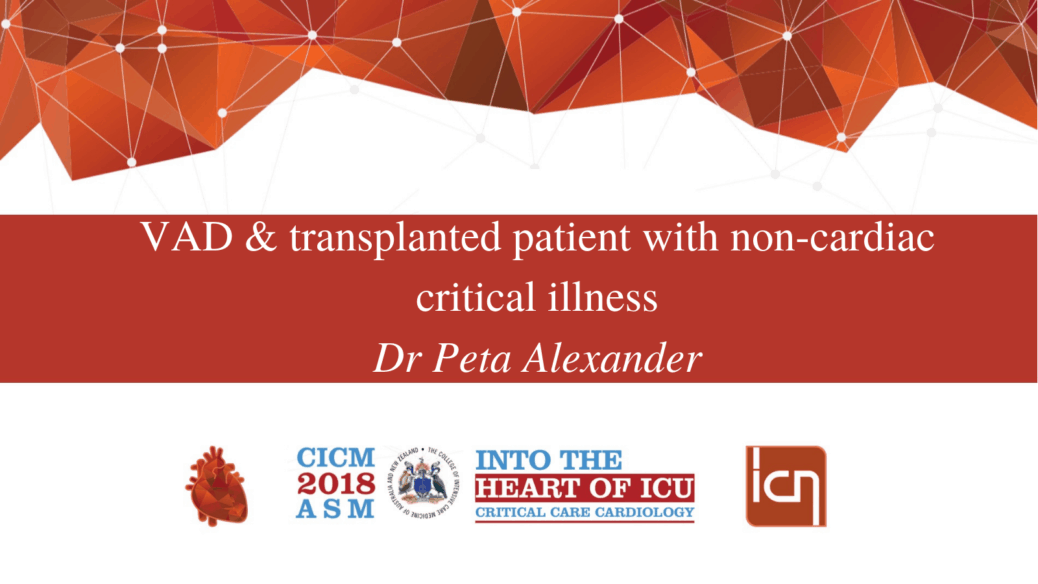Use of Ventricular Assist Devices (VAD) and heart transplantation (HT) for end stage cardiac failure have increased significantly in recent decades. These support strategies hold inherently different risks in the face on non-cardiac critical illness, and require multidisciplinary team management.
According to INTERMACS, more than 2500 VADs/year are implanted the USA. Most implanted devices are continuous flow left-VADs (75%) which deliver systemic cardiac output directly related to pump speed and inversely related to pressure gradient across the pump. Improved survivorship has resulted in increasing outpatient management, however 12-month mortality is 12%, and <30% of patients are major-event free for 1-year. Critical illness may be device related, including cerebrovascular accidents, gastrointestinal bleeding, infection or multi-organ system dysfunction. Alternatively, presenting complaints may be unrelated to the device, with 23-27% of VAD patients undergoing non-cardiac surgery during support. Regardless of etiology, patient management is inherently linked to optimizing device function. Maintaining Left-VAD flow depends on adequate preload, supported right ventricular contractility and afterload reduction whilst managing systemic vascular resistance. Attention to associated coagulopathy, anti-inflammatory therapy and early institution of anti-microbial agents should be considered.
HT is established therapy for end-stage heart failure, with more than 5000 HT reported to ISHLT in 2015. Complexity has increased due to comorbidities and recipient age. Etiologies of critical illness for HT patients include post-transplant complications such as acute rejection, graft failure and cardiac allograft vasculopathy. Acute rejection episodes affect >1/4 of patients within 1-year post-transplant. Systemic illnesses may also be associated with chronic immunosuppression, for example malignancy and unusual presentations of infectious disease; as well as medication toxicity where the post-transplant medication cocktail exacerbates underlying renal insufficiency and multi-organ dysfunction. Therapeutic interventions must also take into consideration potential drug-interactions. Recognizing and managing critical illness in the post-transplant population is exacerbated by vagal denervation blunting normal heart rate response, obscuring illness severity and limiting augmentation of cardiac output.

























